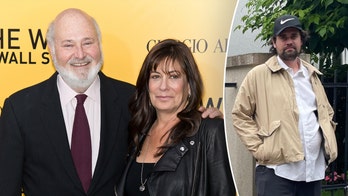LOS ANGELES – Queen of controversy Lady Gaga is making headlines for yet another racy video featuring highly sexualized material combined with religious imagery. But while some argue Gaga has crossed the line between edgy and tasteless, her use of distorted Catholic imagery speaks to a rising trend in Hollywood.
The pop princess, real name Stefani Germanotta, recently released the music video for her single “Alejandro” and has sparked quite the outcry given its saturation of controversial imagery, including her swallowing rosary beads in a latex-version of a nun’s habit, holding the crucifix in front of her crotch and simulating group sex with a bunch of beefed-up men, who are nearly naked save for underwear and high heels.
Even fellow songstress Katy Perry, who comes from a religious upbringing, hinted her disdain for the music video last weekend when she tweeted, "Using blasphemy as entertainment is as cheap as a comedian telling a fart joke.”
But Gaga, who attended Catholic school as a teen, is hardly alone in her use of distorted Catholic imagery, nor is it anything new in pop music.
Madonna sparked several outcries in the late ’80s and early ’90s when she touched on issues of abortion in her video for “Papa Don’t Preach,” kissed a black Jesus in “Like a Virgin” and danced in front of a burning cross in “Like a Prayer.”
More recently, supermodel Miranda Kerr (who intends to release an inspirational book for young girls later this year) posed for edgy European fashion mag Numero in a spread that touched on homosexuality and Catholic imagery, as she sensually embraced a woman dressed as a nun. And last year “Dancing With the Stars” beauty Joanna Krupa starred in a PETA campaign to encourage people to adopt pets from rescue shelters, which just so happened to be set in a church – with Krupa, in the nude, holding a strategically placed crucifix to cover her private parts.
Meanwhile, Larry David urinated on an image of Jesus Christ in an episode of “Curb Your Enthusiasm,” and comedian Sarah Silverman made a viral YouTube video urging the Vatican to be sold in order to solve the world hunger crisis and suggested that, in return, our “caped crusader,” the Pope, would get sexual favors in heaven.
And just last week Pop Tarts reported on Comedy Central’s possible plans to develop a satirical series about Jesus Christ.
So why is it that the entertainment industry isn’t afraid to twist, tease and ridicule Christianity, or more specifically Catholicism, but rarely dares even to touch other religions? Would Gaga have dared hold a Koran to her crotch? Would David have been brave enough to relieve himself on a painting of Allah?
“Most definitely not,” said pop culture and media relations expert Adam Weiss. “It is disturbing to think we live in a country where we happily mock the values that the majority of our citizens stand for. It’s sad, but the entertainment/media industry only cares about the thoughts of Hollywood, West Hollywood and New York City – everyone else is an outcast or a hick.”
Talk show host and film critic Michael Medved echoed that sentiment, citing the long tradition of mocking Catholicism in this country.
“The reason this is considered to be OK is because the Catholic Church is the most visible and powerful, single religious institution on the planet. There is no comparable, unifying force in Islam or in any other religious faith or tradition. [The media] make fun of rich, white, businessmen all the time because no one thinks of them as underdogs.”
And according to the Catholic League of America, show business simply isn’t frightened of Catholicism the way it is of other religions.
“They won't touch mainline Protestantism and Reform Judaism, and that's because their teachings on sexuality are not out of sync with the views of the cultural elite,” said the organization’s president, Bill Donohue. “They won't touch Islam out of fear. That leaves Catholicism; they loathe its teachings and are not afraid.”
Still, Gaga isn’t without her defenders, who say she is just using images to convey a message.
“These religious symbols are often symbols of oppression and youth, and they often have very emotional meanings, particularly for artists like Lady Gaga and Madonna who grew up with these teachings,” media expert Michael Levine said. “The Beatles' biggest controversy was them saying they were bigger than Jesus Christ. Controversy is good for business and it’s a great opportunity to generate discussion.”
And “Alejandro” director Steven Klein told MTV that the video wasn’t meant to “denote anything negative, but represents the character's battle between the dark forces of this world and the spiritual salvation of the Soul. She chooses to be a nun, and the reason her mouth and eyes disappear is because she is withdrawing her senses from the world of evil and going inward toward prayer and contemplation.”
Additional reporting by Deidre Behar.


























